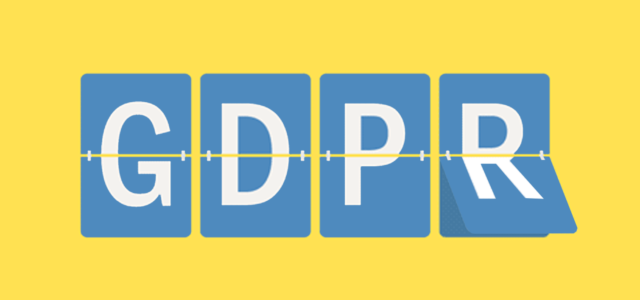Selling professional services is ultimately about getting the right client to say yes to your proposal. But this raises an important question. Who are the right clients? In my experience, this will vary depending on whether you sell services to businesses or individuals. But here is something that will not vary.
For you to create the triple win, where the client wins, you win and your company wins, you absolutely must have clarity about your ideal client. When service organizations struggle to develop a great pipeline, to win deals or when deals take forever to close, usually the root cause is a problem with their ideal client profile.
However, when service firms have a clearly defined ideal client profile and make this the centerpiece of their sales and marketing efforts, great things happen. Their win-rates go up, deals close quickly, their clients are deeply satisfied, their profits are healthy and team members take pride in their work. Let me show you how to do this.
WE KNOW WHO WE SERVE
For more than 20 years now, we’ve begun nearly every engagement with new clients by developing a deep-dive ideal client profile. When I suggest to prospects that this is our starting point, they are often mystified. They say to me – Randy we already know who we serve. Why should we spend money on this?
You might feel the same way. You might say to yourself, why do I need an ideal client profile when I already know who we serve and what they need? Let me address that question.
A deep-dive ideal client profile does so much more than tell you who you serve. It allows you to focus on the win-results and lose-results of prospects who are in a position to say yes. These prospects could be very different, depending on whether you serve businesses or individuals.
If you serve primarily businesses and your services cost more than $10,000 or are monthly or annually repeatable, such as managed services, it is highly likely that you’ll have to satisfy a committee to win. Usually the committee is comprised of decision-makers and decision-influencers. Often times committee members do not see things eye-to-eye, which makes it challenging for you. These types of deals are often multi-phased and can take months or even years to win.
If you sell services primarily to sophisticated individuals, you will still likely encounter the same level of complexity in persuading the decision-maker as those who sell in a B2B context. However, your sales cycle will probably be compressed. Sophisticated service buyers sometimes choose to work with someone after just a few minutes.
This is particularly true in service verticals such as medicine, law, accounting and financial services. In these verticals, a feeling of connection and chemistry really matter.
Given the importance of getting to a yes-decision, it only makes sense that you would want to give yourself every possible competitive advantage. Yet time after time, when I speak with leaders of service firms, they are convinced they know who they serve – even when their firm is not achieving its potential.
To help these organizations understand the value of an ideal client profile, I ask them a couple of questions.
- If I were to interview five of your top people and ask them to list the top five goals, opportunities and challenges of your ideal client, how closely do you think their answers would align?
- If I were to interview ten of your top clients and ask them about their top goals, opportunities and challenges, how closely would their answers match your team’s answers?
If you cannot today, with great confidence, say that you have alignment among team members and clients about what matters to them and what they are willing to fund, you have work to do. You need to develop a deep-dive ideal client profile.
KEY TAKE-AWAY: A DEEP-DIVE IDEAL CLIENT PROFILE HELPS YOU FOCUS ON THE WIN-RESULTS OF PROSPECTS SO YOU CLOSE MORE DEALS FASTER.
THE VALUE OF AN IDEAL CLIENT PROFILE
Everyone loves a winner. Service organizations who serve primarily ideal clients convey a winner’s mentality. I’m sure you’ve seen this. The staff know that what they do has a major impact on their clients. This energizes them and gives them a confidence that is highly attractive.
I believe an ideal client profile impacts your sales and marketing efforts in several key ways:
- It guides your early-stage sales efforts and prevents you from wasting time on inappropriate prospects. This makes your top people more productive.
- It allows you to connect with the right prospects, especially when using social selling.
- It allows you to quickly identify whether or not what a prospect cares about is what you can do for them. This is crucial.
- It gives you the opportunity to become a thought leader and create content that ideal prospects simply cannot resist.
An ideal client profile helps you convey a winner’s mentality and a confidence level that prospects find very attractive.
WHAT IS AN IDEAL CLIENT?
Sounds great, right? But this raises an important question. What does an ideal client look like? What makes an ideal client… well ideal? There are seven major qualities that we have identified that cause ideal clients to stand out:
- Impact: you deliver services that have a significant impact on their situation, usually their top or bottom line or both. There are also other types of impact, like peace of mind, goal achievement, stress reduction and a strong sense of progress toward goals.
- Budget: ideal clients easily afford your services and usually have already reserved a line item in their budget for those services.
- Profits: you earn a substantial profit by delivering these services.
- Insights: you understand what your ideal client needs often better than they do.
- Expertise: your ideal clients want and need your specific capabilities and have limited options for acquiring that expertise.
- Culture: there is a good fit between the way you do business and the way your ideal clients prefer to be served.
- Chemistry: your staff and your ideal clients’ staff work well together with few conflicts.
When you think about the clients you serve today, how do they stack up against these attributes? How could your firm benefit from serving more clients who are a great fit?
HOW TO BUILD AN IDEAL CLIENT PROFILE
A great ideal client profile is comprised of three core parts:
- A summary statement
- Demographics
- Psychographics: top 5 goals, opportunities, challenges
A summary statement succinctly describes who your ideal client is and what they care about. For example, here is a summary statement of my firm’s ideal client:
Our ideal client is a successful medium-sized professional services firm that knows it has not achieved its full potential. As much as they have done well, company leaders are hungry to grow and reach their next level. Specifically, they want to increase market share, acquire new clients, increase revenue and profits, generate leads, build a strong brand, differentiate from competitors, and create demand that positions them to pick only the most desirable deals with only preferred clients.
Our ideal clients have often reached a plateau that they cannot seem to break through. They are profitable and stable. They have been in business for 5 years or more. They are a hidden gem in their market. They are very good at what they do, but they are usually not the best-known firm in their industry.
Does that sound like your organization? If it does, it’s probably because we have been very intentional in studying our market and discovering who we are best-suited to serve.
But now let’s go even further. Let’s look at the demographics. Demographics describe those characteristics that are external to your ideal decision-maker. This can include things such as:
- Industry
- Title
- Specific companies
- Geographic location
- Education
- Age
- Race
- Annual household income
All of these factors are useful in building a profile of who you want to target. This becomes very helpful later when building outreach campaigns for content marketing. But let’s get right to what really matters most – psychographics.
Psychographics are the most important part of your ideal client profile and require the most reflection and speculation. When I help my clients build their ideal client profiles, this usually requires a level of deep thinking and reflection on their part. Sometimes we’ll even use invoice analyses and client-by-client analyses to identify those who make the cut versus those who don’t make the cut.
To help you in the process, here is good working definition of what constitutes goals, opportunities and challenges.
- A goal is something an ideal client absolutely must accomplish. Goals will always get funded.
- An opportunity is something that excites their imagination. Opportunities will get funded if time and budget permit.
- A challenge is something that prevents the ideal client from achieving their goals. Challenges are typically roadblocks of some type. Challenges are the least likely to get funded because the human animal has a tremendous capacity for suffering.
I really want to encourage you to spend time developing your ideal client profile. While this takes time and effort, it pays huge dividends down the road. I encourage you to get alignment among your key stakeholders about their top goals, opportunities and challenges.
I also believe it is crucial to conduct independent qualitative research with your top clients today and ask them the same questions. Usually this research should be conducted by a qualified third party, not someone from your firm. This prevents bias and gives you the chance to update your ideal client profile with what your actual clients say.
USING YOUR IDEAL CLIENT PROFILE
Once you’ve developed your ideal client profile, there are few very practical ways you can use it to accelerate the growth of your firm. You can use it to:
- Build interview questionnaires for the early stages of the consultative sale.
- Place it on your desk and as you are talking to prospects, see how closely their concerns match up to your profile.
- Use the goals, opportunities and challenges as starting points for thought leadership materials like articles and blog posts.
- Develop training materials for new employees so they come to understand who you serve and what those clients care about.
There are so many ways to use this valuable tool. It will take time and effort to build it, but it’s so worth it.
NEXT STEPS
If you’d like to learn more about how to build an ideal client profile, I have a resource for you. I’ve developed an action guide called 7 STEPS TO DOUBLE SERVICE FIRM REVENUE. This in-depth guide will show you how to build an ideal client profile step-by-step. If you liked the ideas in this article, I know you’ll love the action guide.
Article by channel:
Everything you need to know about Digital Transformation
The best articles, news and events direct to your inbox
Read more articles tagged: Customer Centricity, Digital Marketing, Featured







